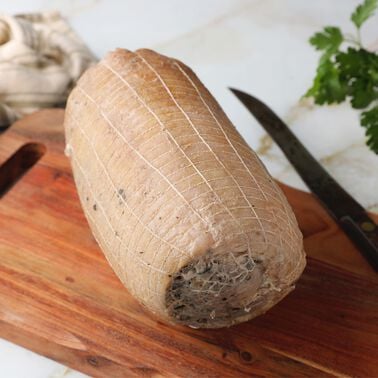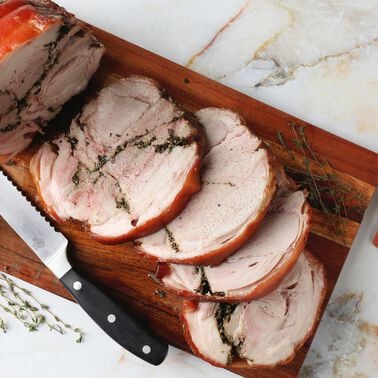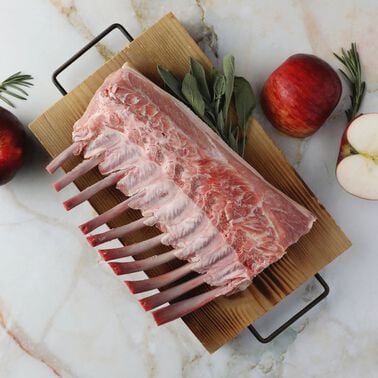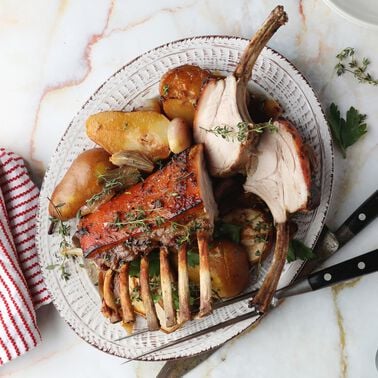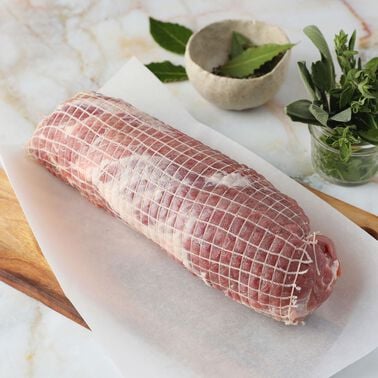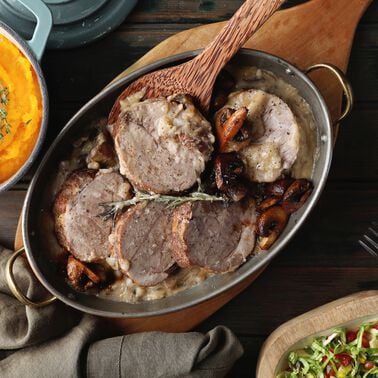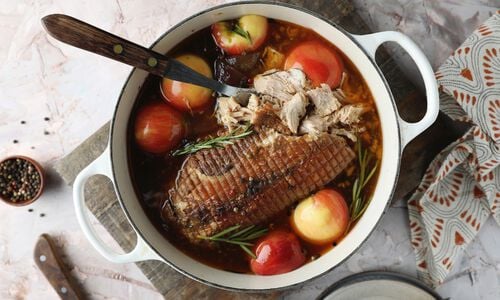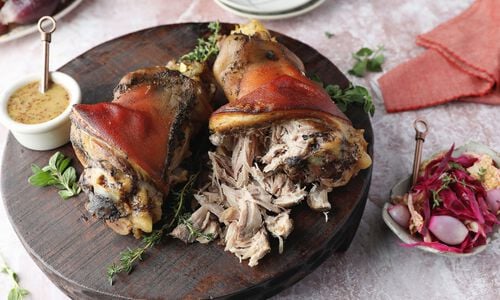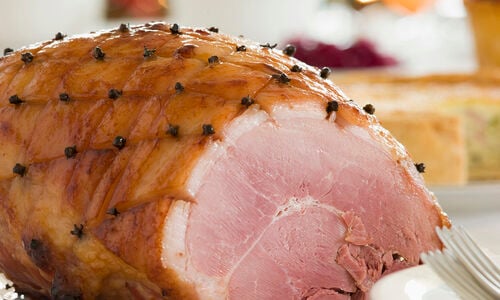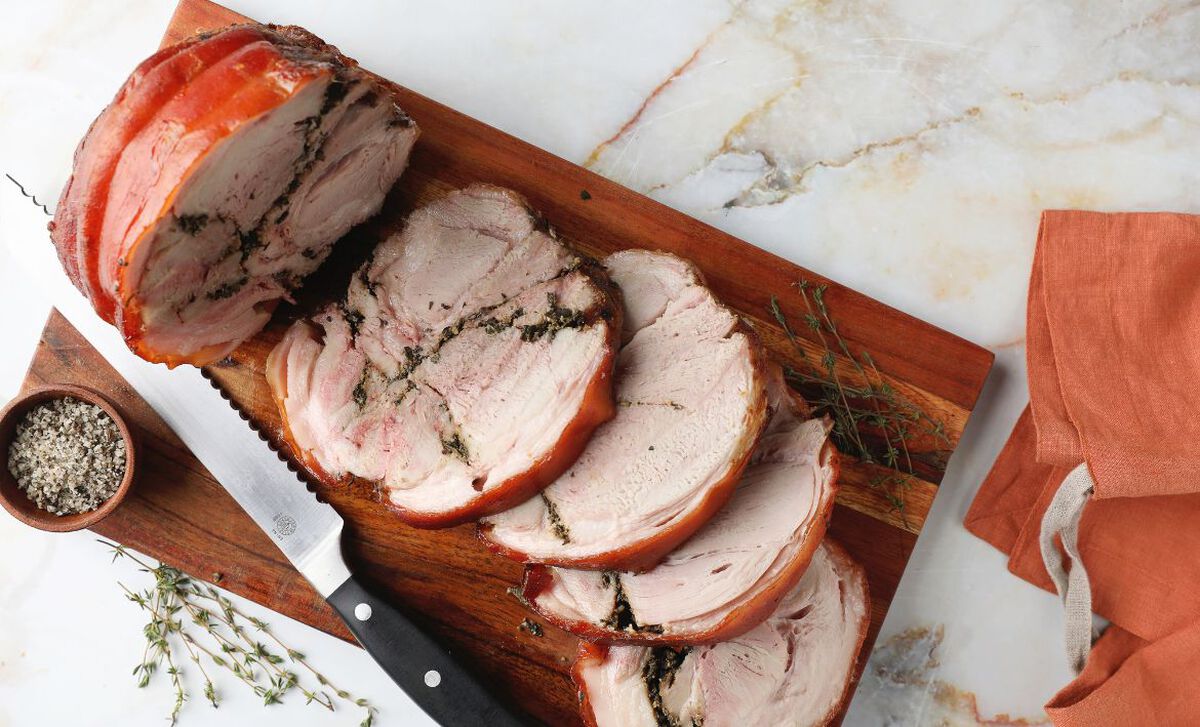
Porcelet is so tender and succulent that our porchetta is made from a shoulder cut and not the traditional pork belly. With a generous streak of all-natural herbs and spices inside the roulade, including fresh garlic, rosemary, and thyme, this porchetta delivers great flavor along with lush texture.
Our Porcelet Porchetta is cooked sous vide in a net, and we find it is best to remove that net and tie the roast securely with butcher’s twine at 1 to 2-inch intervals. This allows the skin to crisp more evenly and reduces the risk of ripping off that precious crackling as you remove the net. If butcher twine is unavailable, the porchetta can be cooked with the net. If you do so, take extra care to remove it midway through roasting without disrupting the skin.
The Steps to Perfect Porchetta
1. Preheat oven to 275F. If convection, set oven to high fan.
2. Remove porchetta from bag and carefully wipe away excess gelatin. This can also be accomplished by placing the porchetta in a roasting pan and transferring it to the oven for 5 minutes to allow gelatin to melt off. Reserved gelatin can be discarded or used in a sauce for serving.
If using butcher's twine: When porchetta is cool enough to handle, remove and discard the elastic net. Securely tie porchetta at 1 to 2-inch intervals.
3. Place porchetta on a wire rack in a roasting pan with the seam side facing down. Roast until internal temperature reaches 120F, approximately 2 hours. Rotate at least once halfway through the cooking process to ensure even browning.
Without butcher’s twine: Approximately 1 to 1½ hours into the reheating, remove porchetta from oven. When cool enough to handle, cut away and discard the elastic net, taking care not to tear the skin. Return porchetta to the oven to continue reheating.
4. Remove from oven. If further browning or crisping is needed, increase oven temperature to 375F and return porchetta to oven for 10-20 minutes more. Monitor browning closely.
5. Allow porchetta to rest for 15-20 minutes before slicing. Skin will continue to get crispy while resting.
6. If using reserved gelatin for sauce, bring gelatin to a boil in a small saucepot. Pour through a fine mesh strainer to remove solids. Use the cooking liquid as you would stock or broth when making a sauce.
7. Remove butcher's twine, if used. Slice and serve.
Make Porchetta Sandwiches
Any leftovers can be enjoyed in sandwiches. The classic Italian approach layers thinly sliced porchetta on rustic bread like ciabatta or sourdough, with arugula and gremolata, a fresh and herbaceous sauce made with chopped parsley, fresh garlic, capers, lemon, olive oil, and optional anchovies for an umami boost. Raw and mixed by hand it is a rustic pesto, or if preferred, can be blended smooth in the food processor. Either way, this punchy sauce adds rich flavor and cuts the fat of the succulent porchetta. Aioli and pickled onions make fine accompaniments, too.
